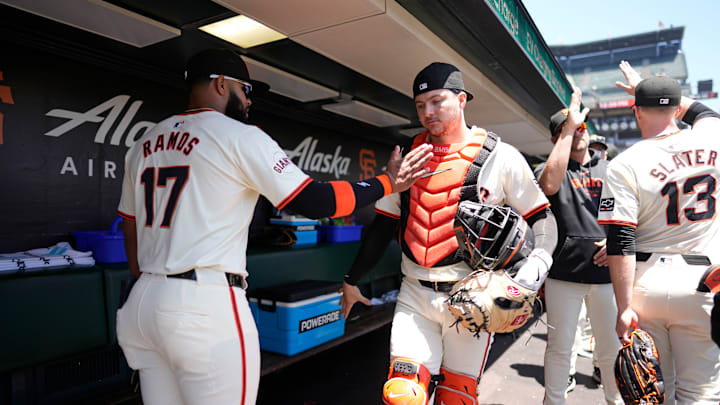The SF Giants aimed to add more speed to the roster in the offseason. To some degree, they have accomplished this, but they are still not stealing a lot of bases. More concerning than that, they are not preventing stolen bases either.
The SF Giants and the big gap on the bases
The Giants have stolen 24 bases in 2024. That is the lowest mark by far this year with the Detroit Tigers being the next closest at 31 steals. On the other side of the spectrum, the Cincinnati Reds have 105 steals.
That should come as no surprise. The Reds have a lot of speedy and athletic players. Plus, they led baseball with 190 steals last year.
One of the many questions that I see is why do the Giants not steal more bases? The short answer is that they are just not good at it. They have been successful in 71 percent of stolen base attempts this year. Anything above 75 percent is a good mark, but getting out on nearly 30 percent of stolen base attempts is counterproductive.
This should not be too surprising. However, what is surprising is that the Giants lead baseball with 77 stolen bases allowed. This gives them a -53 steal differential. Admittedly, steal differential is not a real stat, but it highlights the contrast to what they are doing on the bases versus what they are allowing the opponent to do on the bases. That said, some of the better teams in baseball such as the Milwaukee Brewers (+56), Kansas City Royals (+46), and the Philadelphia Phillies (+25) steal way more bags than they allow.
Last season, the Giants had one of the best catchers at managing the running game in Patrick Bailey. He has thrown out 23 percent of base runners this season. The league average rate is 22 percent, so he is slightly above that.
Has he regressed to the point where opposing runners run on him with ease? In total, that is just not the case. Bailey is still one of the best catchers in terms of pop time (1.86 seconds), his arm strength sits in the middle of the pack, and his exchange time (0.59 seconds) is one of the best in baseball. He is getting the ball out quickly and generally on target.
Baseball Savant rates him as having +4 caught stealing above average, which is the second-highest mark in baseball. This is to say that he is getting the ball to second base quickly despite what the nominal numbers say. That seems to be in stark contrast to what is occurring on the bases when a Giants pitcher is on the mound.
So, what is the issue? While above-average speed helps players steal bases, the pitcher plays a huge role in the runner advancing. Giants pitchers just do not seem to be doing a good job at this. Baseball Savant has a stat called pitcher base advances prevented as a way to quantify how pitchers are doing at preventing runners from advancing. The Giants have recorded -9 pitcher base advances prevented, which is the third-worst mark in baseball. Sounds bad, right?
Based on observation, the Giants are not really doing a good job of keeping the runner on the base. They allow the runner to get a large lead, do not check on the runner often enough, and have a slow delivery to home. These are all ingredients for a player to run and opposing players have been running on the Giants more than any other team.
These all feel like coachable qualities, but that has not translated to the game just yet. It is a minor detail. Sometimes, the difference in a game is 90 feet. The Giants are doing a few things well, but preventing runners from advancing to the next base is not one of them.
